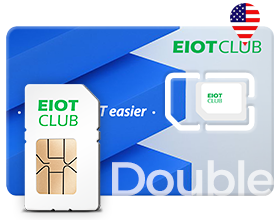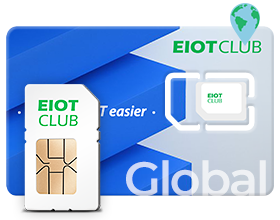How to Protect Your Personal Information and Data Privacy While Using a SIM Card with Your Hotspot Device?

In today's hyper-connected world, using a SIM card with a hotspot device has become a common practice to access the Internet on the go. However, with this convenience comes the risk of compromising personal information and data privacy. This article will explore the best practices for protecting your privacy while using a SIM card with a hotspot device. Whether you use it for work or leisure, it is essential to keep your personal information secure. By following these tips, you can enjoy the benefits of this technology without compromising your privacy. So let's dive in and discover how to stay safe online!
Understanding the Risks
Using SIM cards with hotspot devices can be convenient but also exposes you to security risks like hacking and data theft. These risks can lead to serious consequences like identity theft and financial loss.
First and foremost, SIM cards store a lot of sensitive personal information - contacts, call logs, location data, and more. When a SIM card is compromised, hackers gain access to this trove of data. They can then pose as you to scam and defraud people in your life. The risk of an attack increases when you share a SIM card with a hotspot device.
Secondly, hotspot devices provide a gateway for hackers to monitor and siphon off information transmitted through your SIM card. They infect the device with malware to intercept usernames, passwords, and account details. Without your knowledge, hackers can now access your online profiles and accounts.
In the worst cases, hackers get your bank account numbers and credit card information. They could then rack up huge bills or make unauthorized transactions. You might not realize your SIM card data has been compromised until you see anomalies on your statements.
While using SIM cards and hotspot devices together is handy, the security risks are very real. To minimize risk, only use trusted hotspot devices, change your SIM PIN frequently and monitor your accounts vigilantly for suspicious activity. By understanding the potential dangers and taking appropriate actions, you can maximize the protection of your personal information.
Best Practices for Protecting Your Privacy
Using a mobile hotspot sim card is a convenient way to stay connected on the go, but it also poses potential risks to our personal information and data privacy. To protect ourselves while using these devices, here are some best practices to follow:
Firstly, we should use strong passwords for our devices and accounts. We must ensure that our passwords are long, complex, and unique to each account.
Secondly, we should avoid public WiFi networks as much as possible. When connecting to a public network, enable a virtual private network (VPN) to encrypt our online activities and better ensure our privacy.
Thirdly, enabling two-factor authentication provides an additional layer of security when logging in to our accounts and devices. Two-factor authentication requires us to provide a second verification form, such as a fingerprint scan or a code sent to our phone, before accessing our account.
Furthermore, it's essential to keep our devices and software up to date. Regularly updating our security software ensures we have the latest protection against viruses and other online threats.
Finally, consider purchasing sim cards from reputable providers that offer secure protocols and encryption, such as Eiotclub. Avoid free or untrustworthy sim card services, which may compromise our privacy and personal information.
Choosing a Secure Hotspot Device and SIM Card
Choosing a secure hotspot device and SIM card is essential for protecting your privacy and data. Here are some key factors to consider:
Look for reputable brands - Go with well-known companies that have a good track record for security updates and customer support, such as Eiotculb. Lesser-known brands may have lax security practices.
Check for encryption - The device and SIM card should support strong encryption standards like WPA2 or AES to secure your data and WiFi connection. Avoid any that only offer WEP encryption, as it is outdated and hackable.
Ensure secure protocols - Look for features like HTTPS browsing, VPN compatibility, and software that uses secure protocols like SSL/TLS. These help prevent man-in-the-middle attacks and snooping.
Management features - Opt for a hotspot with app controls, guest networks, MAC address filtering, and other management features. These give you more control over security.
Hardware security - Some newer devices have security chips, sealed cases, and other hardware protections that make hacking more difficult. Consider these extra defenses.
Software updates - Choose a provider with a track record of frequent security updates. Hackers are constantly finding new vulnerabilities, so software patches are critical.
Extra services - Two-factor authentication, fraud monitoring, and antivirus are valuable added security services to look for, especially from larger companies.
Go with a hotspot device and SIM card from a major brand you trust. Check reviews to confirm they have all the security essentials and a commitment to protecting customers. Then periodically install any updates to keep your information as protected as possible!
Conclusion
In conclusion, using a SIM card with a hotspot device is convenient but comes with risks to personal information and data privacy. By following the best practices discussed in this article - using strong passwords, avoiding public WiFi networks, enabling two-factor authentication, choosing a secure hotspot device and SIM card from a reputable provider, and monitoring your accounts vigilantly -you can enjoy the benefits of the technology while minimizing the risk to your privacy and personal information.





















 eSIM
eSIM
 Refill
Refill






